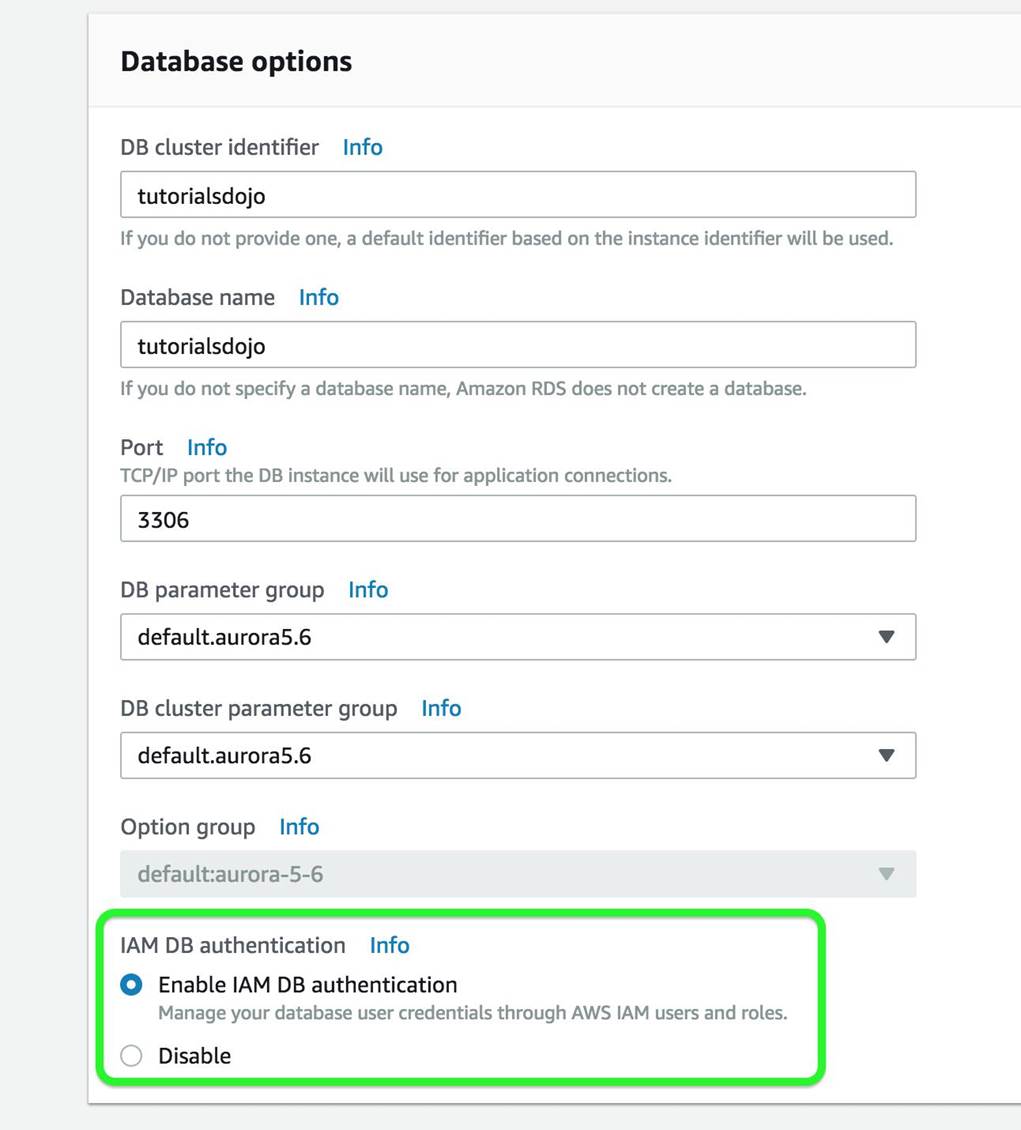As the Solutions Architect of the company, which of the following should you do to meet the above requirement?
A financial application is composed of an Auto Scaling group of EC2 instances, an Application Load Balancer, and a MySQL RDS instance in a Multi-AZ Deployments configuration. To protect the confidential data of your customers, you have to ensure that your RDS database can only be accessed using the profile credentials specific to your EC2 instances via an authentication token.
As the Solutions Architect of the company, which of the following should you do to meet the above requirement?
A . Configure SSL in your application to encrypt the database connection to RD
C . Create an IAM Role and assign it to your EC2 instances which will grant exclusive access to your RDS instance.
D . Use a combination of IAM and STS to restrict access to your RDS instance via a temporary token.
E . Enable the IAM DB Authentication.
Answer: D
Explanation:
You can authenticate to your DB instance using AWS Identity and Access Management (IAM) database authentication. IAM database authentication works with MySQL and PostgreSQL. With this authentication method, you don’t need to use a password when you connect to a DB instance. Instead, you use an authentication token.
An authentication token is a unique string of characters that Amazon RDS generates on request.
Authentication tokens are generated using AWS Signature Version 4.
Each token has a lifetime of 15 minutes. You don’t need to store user credentials in the database, because authentication is managed externally using IAM. You can also still use standard database authentication.

IAM database authentication provides the following benefits:
Network traffic to and from the database is encrypted using Secure Sockets Layer (SSL).
You can use IAM to centrally manage access to your database resources, instead of managing access individually on each DB instance.
For applications running on Amazon EC2, you can use profile credentials specific to your EC2 instance to access your database instead of a password, for greater security
Hence, enabling IAM DB Authentication is the correct answer based on the above reference. Configuring SSL in your application to encrypt the database connection to RDS is incorrect because an SSL connection is not using an authentication token from IAM. Although configuring SSL to your application can improve the security of your data in flight, it is still not a suitable option to use in this scenario.
Creating an IAM Role and assigning it to your EC2 instances which will grant exclusive access to your RDS instance is incorrect because although you can create and assign an IAM Role to your EC2 instances, you still need to configure your RDS to use IAM DB Authentication.
Using a combination of IAM and STS to restrict access to your RDS instance via a temporary token is
incorrect because you have to use IAM DB Authentication for this scenario, and not a combination of an
IAM and STS. Although STS is used to send temporary tokens for authentication, this is not a compatible
use case for RDS.
Explanation:
Reference:
https://docs.aws.amazon.com/AmazonRDS/latest/UserGuide/UsingWithRDS.IAMDBAuth.html
Check out this Amazon RDS cheat sheet:
https://tutorialsdojo.com/amazon-relational-database-service-amazon-rds/
Latest SAA-C03 Dumps Valid Version with 400 Q&As
Latest And Valid Q&A | Instant Download | Once Fail, Full Refund

